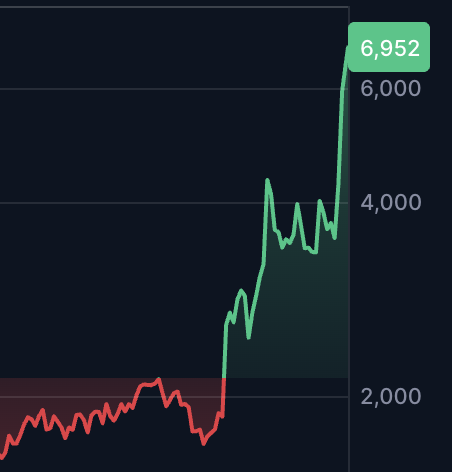Natural curiosity often leads you to ask, “What is FUD, and how might it affect my crypto journey?” Whether you’re brand-new to digital currencies or already have a small portfolio, it’s crucial to understand how misinformation can spark fear, uncertainty, and doubt in the market. Below, you’ll find a practical overview of how FUD works, ways you can navigate it, and steps to safeguard your investments.
Explore the meaning of FUD
When it comes to crypto, “FUD” is shorthand for fear, uncertainty, and doubt. Originally associated with marketing tactics designed to damage a competitor’s reputation, the term has been widely adopted by online communities to describe any message or action that sows negativity and anxiety. It’s not always fabricated misinformation—FUD can also be a response to real events reported in a dramatic or misleading way.
- Fear: A strong emotional response triggered by alarming or negative news.
- Uncertainty: General confusion due to incomplete or conflicting information about crypto’s future.
- Doubt: Skepticism that leads people to question the value and viability of certain coins, tokens, or platforms.
FUD often gains traction when market prices fall rapidly or regulatory changes loom. In both cases, you might see social media posts, articles, or commentary that paint a worst-case scenario. If you don’t learn how to separate facts from theatrics, you might make impulsive decisions—like selling a promising crypto asset too soon.
Spot the sources of FUD
FUD can appear anywhere: newspapers, blogs, social media, or even conversations with friends. Understanding its main sources helps you recognize it when you see it.
Media sensationalism
Crypto news sometimes leans on eye-catching headlines, especially when drastic events grab attention. For instance, an outlet might highlight one negative aspect of a blockchain project while ignoring the positive developments. This imbalance can leave you with an exaggerated sense of danger.Influencers and community rumors
Popular figures in the crypto space—like well-known investors or Twitter personalities—occasionally amplify rumors, either knowingly or unknowingly. A single tweet can rapidly spread speculation about a project’s downfall or a supposed government crackdown. If you rely only on these sources, you might feel anxious before you’ve even read an official statement.Misunderstood technical details
Crypto involves complex algorithms, consensus mechanisms, and code updates. When a new concept emerges—like a platform launch or a protocol upgrade—misinterpretations can spark alarm. In reality, these technical changes can be routine, beneficial improvements.Manipulative tactics
Some people spread FUD intentionally, hoping to drive a coin’s price down so they can buy at a discount. By fueling panic, they influence market sentiment to their advantage. Recognizing these manipulative patterns helps you resist knee-jerk reactions.
Learn the impact on investors

FUD thrives on panic, which can directly affect your financial decisions. Seeing sudden negative headlines or reading tweets about an “imminent market crash” might cause you to withdraw your holdings prematurely. Over time, if you let your decisions hinge on unverified fears, you could miss out on potential gains or even lock in unnecessary losses.
Emotional toll
When you succumb to FUD, you view the market in extremes—everything either looks dire or perfect. Fear-based thinking narrows your perspective, leading you to focus on short-term turmoil instead of long-term strategy. This rollercoaster of emotions can wear you down, making it hard to think clearly and stay consistent with your original plans.
Market volatility
FUD can magnify existing volatility. If you’re new to crypto, it’s easy to be overwhelmed by rapid price swings. When panic spreads through social platforms, large sell-offs might occur, which drives prices even lower. This reaction loop can create an environment where short-lived rumors have an outsized influence on market trends.
Overcome FUD effectively
It’s essential to have a strategy for dealing with negative news cycles, whether they’re based on fact or exaggeration. By knowing how to analyze and confirm information, you can reduce stress and keep your emotions in check.
Research and verify information
Any time you come across alarming crypto news, consider the following:
- Check multiple sources: Compare the story on different websites, social media channels, and official project forums.
- Look for official statements: See if exchanges, project teams, or regulatory bodies have posted clarifications.
- Evaluate the track record: Notice if the news outlet or influencer has a reputation for sensationalism.
Follow a long-term plan
Before investing in any crypto asset, set clear goals and determine the timeframe for holding your positions. A sudden drop can feel less catastrophic when you view it as part of a multi-year journey rather than a short-term hiccup. Dividing your portfolio into strategic segments also helps—some funds for long-term holds, others for shorter-term opportunities.
Keep emotions in check
Remind yourself that crypto markets are inherently volatile. Price corrections aren’t always triggered by genuine problems—sometimes they’re just part of the normal cycle. Create a habit of pausing before making rushed decisions. Ask yourself: “Is this information verified? Am I reacting out of fear or logic?”
Try cross-chain solutions with Xgram
An effective way to temper the anxiety aroused by FUD is to have tools at your disposal that maintain flexibility for your trading strategies. One such tool is Xgram, an exchange specialized in cross-chain solutions that let you move assets between different blockchains. By cutting down on excessive fees, Xgram helps you optimize your investment approach. You can swap tokens across various networks more seamlessly, ensuring you aren’t limited to a particular chain’s circumstances. This flexibility can serve as a safeguard: if FUD over a specific blockchain arises, you can diversify quickly. Plus, by saving money on transaction fees, you retain more capital for reallocating into potentially undervalued assets.
Look at common FUD examples
It’s easier to recognize FUD when you understand how it manifests. Below are some typical scenarios that have fueled panic in crypto history:
“Regulations will shut everything down”
Rumors often circulate that governments worldwide will ban cryptocurrency altogether. While some countries do maintain strict regulations, many aim to balance user protection with innovation. In most cases, the industry adapts instead of collapsing.“A huge bubble is about to pop”
During market surges, skeptics compare crypto to historical financial bubbles, like the dot-com era. While rapid growth does lead to overvaluations at times, new cycles of technology and investment tend to refocus on viable projects.“Two devs left the project, so it’s dead”
Development teams can shift for many reasons—funding constraints, strategic pivots, or personal career moves. Hearing that key employees have gone can be unsettling, but cryptos are often sustained by wide communities, not just a handful of individuals.“X coin has zero real utility”
Some critics label coins as worthless “meme” assets without diving deeper into the project’s roadmap or adoption metrics. While meme coins do exist, many tokens gain real-world use cases over time, and it pays to investigate thoroughly.“Massive sell-off by whales”
Large holders occasionally redistribute their tokens, which some interpret as a sign of doom. However, these transactions might simply be part of portfolio rebalancing. Whales don’t always exit a market entirely—they often reposition themselves elsewhere.
These examples highlight recurring FUD themes. By seeing how these stories unfold, you learn that some crises don’t pan out as predicted.
Frequently asked questions
Below are five FAQs that often come up when beginners first learn about FUD.
What exactly does FUD stand for?
FUD is short for Fear, Uncertainty, and Doubt. It can describe negative campaigns or swirling rumors that lead investors to question, panic, or sell assets prematurely.Why is FUD so common in crypto?
Crypto markets are highly volatile, which leads to heightened emotional reactions. New technologies, a 24/7 news cycle, and social media amplify sensational headlines, creating an ideal environment for FUD to thrive.How do I know if something is just hype or genuine news?
Cross-check the information on reputable crypto news platforms, official project statements, and community forums. If multiple credible sources confirm the details, it’s more likely to be legitimate.Can FUD ever be justified?
Sometimes, negative sentiments arise from valid concerns, like poor project management or regulatory conflicts. However, you still need to verify facts instead of assuming all panic is accurate.Is avoiding FUD about ignoring all negative news?
Not at all. Avoiding FUD means verifying the credibility of information before reacting. You remain informed but filter out hype and false alarms.
Wrap up and keep learning
Understanding what FUD is and how it can affect your decisions puts you in a better position to navigate the crypto market with clarity. You don’t have to ignore negative news—just view it through a skeptical, fact-checking lens. Build your knowledge from reliable sources, stay consistent with your investment plan, and explore cross-chain solutions if you want additional flexibility in your portfolio.
While fear, uncertainty, and doubt can feel overwhelming, your response to them can become a source of strength. By applying the strategies outlined here—and harnessing tools like xgram when necessary—you’ll be better equipped to handle the emotional ups and downs of the crypto world. Stay curious, stay calm, and keep learning about this evolving space in a way that aligns with your goals.




